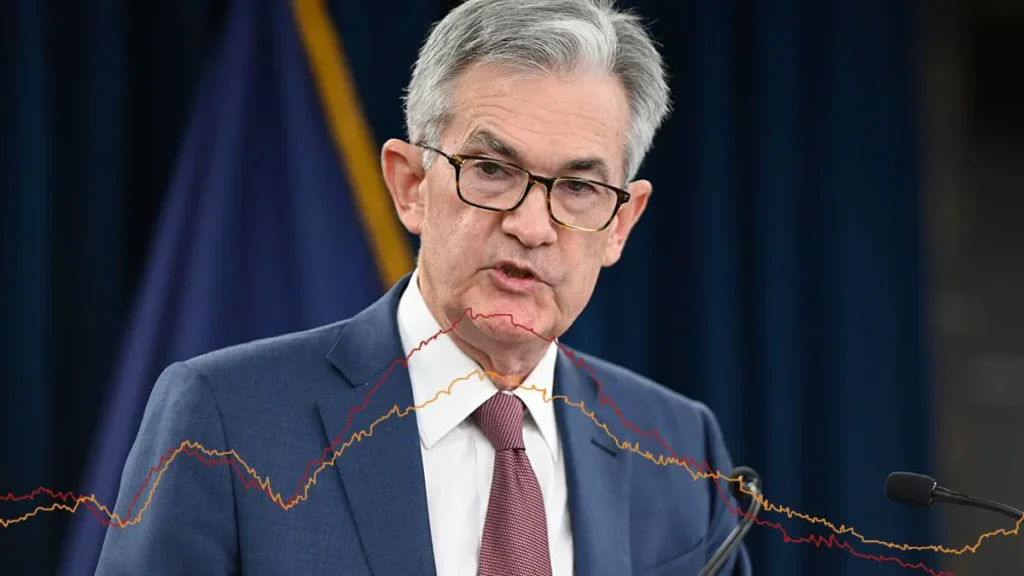The Federal Reserve is expected to maintain interest rates for the third consecutive time at the Fed December Meeting.
Despite market anticipation for rate cuts in March, the Federal Reserve is inclined to resist such adjustments. This stance signals a divergence from market expectations and underscores the Fed’s cautious approach.
The Federal Open Market Committee is set to maintain rates within the 5.25% to 5.5% range, a level not seen in 22 years since July.
The decision and a statement will be disclosed at 2 pm in Washington after the Fed December Meeting. It will be followed by a press conference from Chair Jerome Powell 30 minutes later.
Powell has emphasized that it is premature to speculate on when the central bank might begin reducing interest rates. Policymakers are focusing on pausing and assessing the effects of increased borrowing costs on the economy.
The messaging goal is clear: “We won’t ease prematurely,” stated Lindsey Piegza, chief economist for Stifel Financial Corp.
Acknowledging past instances of inflationary false alarms, the Fed remains cautious, recognizing the progress made but acknowledging the need for further advancements.
Wall Street Eyes Fed’s Dot Plot
Wall Street’s attention will be on the Fed officials’ interest rate forecasts, known as the dot plot. This graphical representation will reveal the committee’s expectations regarding potential interest rate cuts in 2024 and 2025.
According to economists surveyed by Bloomberg, the median projection anticipates two rate cuts next year and an additional five in 2025.
However, there is significant uncertainty, with varying opinions among Fed watchers. Some predict the FOMC might project a full percentage point of cuts in 2024, while others envision no cuts at all.
The committee is expected to adjust its inflation forecasts. Forecasts indicate a likely decrease in the median projection for 2023, from 3.3% to 3.1% for the Fed’s preferred price gauge and from 3.7% to 3.5% for the measure excluding food and energy.
Core inflation over the six months leading to October registered at an annual rate of 2.5%.
Month over Month Consumer Price Rise Creates Caution
Data released on Tuesday revealed a rise in MoM US consumer prices in November, driven by increases in housing and other service-sector expenses. These figures highlight the uneven progress in steering inflation back to the target.
The consecutive holds may be viewed as a temporary pause, yet three could signify the conclusion of the cycle.
Anna Wong, chief US economist, anticipates officials will discuss the conditions that might prompt them to begin cutting rates next year.
Economists anticipate that the FOMC will increase its 2023 growth forecasts following a robust third quarter but may make minimal if any, adjustments to its 2024 outlook.
About three-fourths of economists anticipate the Fed to maintain its current guidance on interest rates, leaving room for a potential additional rate hike. However, one-fourth believes it’s time for the committee to adjust its statement to acknowledge the likelihood that rates peaked in July.
Powell Expected to Reiterate His Viewpoint in the Fed December Meeting
Hugh Johnson, Chairman of Hugh Johnson Economics LLC, suggests there will likely be minimal changes in the statement after the Fed December Meeting.
He anticipates an emphasis on the absence of an imminent plan to reduce interest rates, highlighting that any changes will be contingent on the data.
Powell is expected to reiterate his viewpoint, as conveyed in his December 1st speech at Spelman College in Atlanta, emphasizing that it’s premature to speculate on when policy might ease.
Powell is likely to face questions about his alignment with Fed Governor Christopher Waller, a notable inflation hawk, who acknowledged the central bank’s openness to considering rate cuts if inflation declines persist.
Additionally, he may be queried on his perspective regarding financial conditions, particularly the recent sharp decline in US Treasury yields.
Stephanie Roth, Chief Economist at Wolfe Research LLC, anticipates that Powell will maintain a somewhat hawkish tone.
She notes that Powell’s tone hasn’t shifted as much as some other FOMC members, like Waller, and highlights the material easing of financial conditions in recent weeks.
Read More: Goldman Sachs Changes Anticipation for Rate Cuts in 2024
Interest Rate Reductions 2024: Here’s What the Experts Predict

